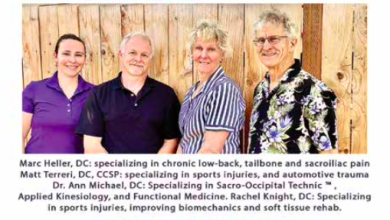Bust a Move
Most of us experience low back pain sooner or later. Studies show that most low back pain eventually goes away at least temporarily, but what happens when it keeps returning? It usually starts with improper movement, but can end in a variety of low back ailments.
Watch a young child squat to the ground. The head stays up, the back is straight and the butt sticks out. This is a perfect movement pattern that places bending in the hips and not in the low back.
How do children know how to do this? No one tells them how to do this – they just know. The fact is, we all know – or rather knew how to do this too.
The problem is time marches on with our youth and so do our perfect posture patterns. We start to replace those perfect movements with hours of sitting at desks, computers and meetings. Then we come home tired, so we sit some more in front of the TV.
Sooner or later, your low back starts to let you know there is a problem.
Tentative studies show that more rural countries have lower incidences of low back pain. The initial information shows hard physical labor itself may not contribute to low back pain. If that is true, then why is low back pain an epidemic in the U.S.?
When you continually move the wrong way, unbalanced forces are placed on your spine that eventually cause problems. Improper forward bending is a common culprit.
Think about this: most of the time a low back injury happens, it is from forward bending. “I hurt my back taking out the trash.” “I hurt my back picking something up.” “I hurt my back vacuuming.”
And sitting? Yep – that is forward bending because most of us eventually slump.
If you take one thing away from this little article (I’ll say it again), it’s this:
Not all, but most low back problems start to occur from some type of improper forward bending.
Additionally, we all are aging and can relate to aging on the outside, but what about the inside? Muscles that were once rubber bands become more like ropes. Discs that were once pliable become dried out and prone to tearing. If you combine that process with our current culture of sedentary sitting, you have a proverbial recipe for disaster.
The good news is that science is now starting to understand this. Newer technologies like diagnostic ultrasound can help us actually “see” muscles inside our bodies while we move.
Modern systems of functional movement and strengthening such as Foundation Training and Functional Movement Screening (FMS) are starting to change the way we move, train and fix low back pain.
At Southern Oregon Sports & Spine, we not only strive to understand a person’s condition, but how they got there in the first place. Understanding your own movement is one of the first steps to helping your back.
Southern Oregon Sports & Spine
987 Siskiyou Blvd.
Ashland, OR
97520
(541) 482-0625



